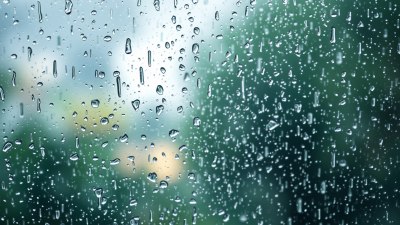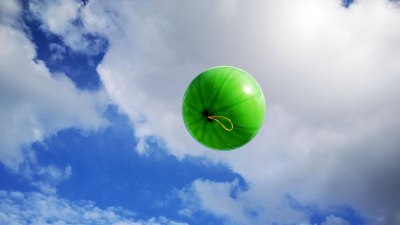How Rain Sounds Become Your Secret Productivity Hack
Discover how rain sounds boost focus, enhance creativity, and improve productivity in your daily tasks effectively.

Image created with Flux Schnell
In the quest for heightened productivity, individuals often explore various tools and techniques to sharpen their focus and optimize their work environment. One surprisingly effective method involves the simple, soothing presence of rain sounds. This natural auditory backdrop has gained popularity not only for relaxation but also as a secret productivity hack that can transform the way you work. Understanding the science behind how rain sounds influence the brain and integrating this ambient noise into your routine can lead to meaningful improvements in concentration, creativity, and overall productivity.
The Science Behind Rain Sounds and Focus
Rain sounds fall under the category of white or pink noise, depending on their frequency compositions. White noise contains equal energy across all frequencies, while pink noise emphasizes lower frequencies. Both types can mask disruptive environmental sounds, creating a consistent auditory environment that helps the brain focus. Specifically, rain sounds produce rhythmic and gentle noise patterns that soften the impact of sudden, jarring sounds like traffic, phone alerts, or conversations, which typically interrupt concentration.
Neurologically, these stable soundscapes reduce cognitive load by minimizing sensory distractions. The brain can devote more resources to the task at hand rather than constantly reacting to new stimuli. Moreover, rain sounds might trigger a calming effect through associations with nature, thus lowering cortisol levels, which are linked to stress. Reduced stress correlates strongly with improved attention span and better task performance.
How Ambient Rain Sounds Enhance Productivity
Ambient rain sounds create an ideal environment for deep work. The term deep work refers to periods of uninterrupted, highly focused cognitive activity that maximize productivity. Rain sounds facilitate this by serving as a buffer against unplanned distractions. When external noises are masked, your mind doesn't need to constantly readjust, which preserves mental energy.
Additionally, the repetitive pattern of rainfall embodies the concept of rhythmic consistency, which can synchronize with brain activity to promote a meditative-like state. This state is often associated with increased flow, the psychological condition where individuals perform tasks with heightened awareness and efficiency. By adopting rain sounds as a background, you essentially prime your mind for sustaining this productive flow state for longer durations.
Many individuals find that rain sounds improve their ability to complete monotonous or repetitive tasks. The steady yet unobtrusive sound creates a comforting atmosphere that reduces feelings of boredom, which often undermine motivation. This is particularly useful for assignments such as data entry, coding, or writing, where maintaining steady output over time is crucial.
Different Work Environments and Rain Sound Application
The advantages of rain sounds vary depending on the work setting. In open-plan offices, where noise pollution from conversations and equipment is common, playing rain sounds via headphones can significantly enhance focus. It effectively neutralizes the chaos without requiring complete silence, which can sometimes feel isolating or uncomfortable.
For remote workers and freelancers who operate from home, rain sounds can create a calming boundary between work and other household activities. By signaling the start of a focused session through consistent auditory cues, individuals can mentally transition into professional mode more quickly.
Students can also benefit by using rain sounds during study sessions or exam preparation. The gentle noise can mask disruptive thoughts or outside noises, encouraging sustained concentration during lengthy review periods.
Varieties of Rain Sounds and Their Unique Benefits
Not all rain sounds are created equal. They vary widely, from light drizzles to heavy downpours, each providing distinct auditory textures. Light rain or drizzle sounds tend to be soft and delicate, ideal for relaxation or creative brainstorming sessions where a subtle backdrop is preferred. Moderate rain sounds strike a balance, providing enough noise to mask distractions while remaining pleasant and unobtrusive.
Heavy rain or thunderstorm sounds include additional elements like thunder rumbles or wind gusts. These can be stimulating for certain individuals who find that dynamic, natural soundscapes enhance alertness and energy. However, they might be too intense for some, potentially disrupting rather than aiding concentration.
Combining rain sounds with other natural noises, such as distant frogs or a flowing creek, can also create complex, immersive environments tailored to personal preference. Experimenting with different rain sound profiles helps determine which variant best supports your productivity goals.
Incorporating Rain Sounds into Your Productivity Routine
To harness rain sounds effectively, start by identifying when and where you experience the most distractions. Use rain sound recordings or specialized apps that offer customizable rain soundscapes. These tools often allow adjustments to volume and intensity, enabling you to tailor the ambiance to suit your immediate task.
Create designated work blocks paired with rain sounds to build mental associations between the sound and focused activity. For instance, playing rain audio during morning writing sessions might train your brain to recognize this pattern as a cue for deep concentration.
Pairing rain sounds with other productivity techniques can have synergistic effects. Methods such as the Pomodoro Technique, which uses timed intervals of focused work followed by breaks, can be enhanced when each focused interval is accompanied by rain ambiance to reduce external disruptions.
Technology and Resources for Rain Sounds
The digital age provides a wealth of resources for integrating rain sounds into workspaces. Various platforms, including YouTube, Spotify, and specialized apps like Rainy Mood or Noisli, offer extensive libraries of rain sound tracks. These resources often include high-quality, looped sounds engineered for continuous play without noticeable breaks.
Smart speakers and noise-cancelling headphones further simplify the process. Noise-cancelling headphones combined with rain sounds can isolate you from an otherwise noisy environment, amplifying the benefits. Smart speakers allow seamless playback controlled by voice commands, enhancing convenience during work sessions.
Some advanced apps incorporate AI-based sound customization, adapting the rain sounds in real time based on your preferences or ambient noise levels, providing an optimized auditory atmosphere tailored for maximal productivity support.
Scientific Studies Supporting Rain Sounds and Productivity
Several studies underline the efficacy of natural ambient sounds in enhancing cognitive function. Research published in journals of environmental psychology highlights how exposure to nature sounds, including rain, improves attention restoration and working memory performance. The Attention Restoration Theory posits that natural soundscapes help replenish depleted cognitive resources by providing effortless attention stimuli.
Additional neuroimaging studies show reduced activity in brain areas linked to stress when participants listen to rain sounds compared to urban noise, affirming the calming and focusing effects of natural ambient noise. Such physiological changes are directly beneficial for productivity by creating a more stable mental environment conducive to complex thinking.
Furthermore, surveys conducted among workers and students have consistently reported higher self-assessed concentration levels and reduced perceived stress when using rain sounds during tasks that require sustained mental effort.
Personalizing Your Rain Sound Experience
While many benefit from rain sounds, individual preferences and sensitivities vary. The key is personalization. Some might prefer mono-channel audio for a uniform effect, while others enjoy stereo or surround sound for a richer experience. Volume levels should be adjusted to ensure the rain sounds aid rather than overwhelm concentration.
It is also important to consider the timing and context of use. For highly creative tasks, softer, lighter rain sounds might foster imaginative thinking, whereas for analytical or repetitive tasks, more rhythmic, steady rain patterns are suitable.
Integrating rain sounds with mindfulness or breathing exercises prior to deep work sessions can further enhance focus by calming the mind and reducing anxiety. Monitoring your productivity changes over time while varying rain sound characteristics can help refine your approach to find the most effective combination.
Potential Limitations and Considerations
Despite the many advantages, rain sound therapy is not universally perfect. Overexposure to any ambient noise, even natural, may cause fatigue or irritation for some users. It's essential to take breaks from continuous listening and to avoid using rain sounds as a mask for excessive environmental noise, which might indicate the need for more substantial changes in your work space.
People with tinnitus or hearing sensitivities should approach rain sounds cautiously, as some sound frequencies could exacerbate symptoms. Seeking professional advice in such cases is recommended. Moreover, relying solely on rain sounds without addressing other key productivity factors such as ergonomics, time management, and task prioritization may yield limited results.
Experimentation and moderation are crucial to maximizing the benefits of rain sounds as a productivity tool.
The Growing Popularity of Nature Sounds in Work Culture
As remote work and flexible job environments rise, the demand for creating personalized, distraction-free workspaces grows. Rain sounds and other natural ambient noises have surged in popularity as accessible, cost-effective means to improve work conditions. Many companies now encourage employees to use such auditory tools to foster mental well-being and productive work habits.
The wellness industry has also embraced rain sounds as part of holistic approaches to mental health, incorporating them into apps focused on meditation, sleep enhancement, and stress reduction. This mainstream acceptance underscores the broad potential of rain sounds not only for productivity but also for overall cognitive and emotional balance.
Practical Steps to Start Using Rain Sounds Today
To begin, choose a reliable platform or app that offers authentic rain sound recordings. Dim the lights in your workspace if possible to enhance the immersive effect. Put on comfortable headphones or position speakers for optimal sound coverage. Adjust the volume to a level that is clearly audible but does not dominate.
Commit to using rain sounds during specific work periods and observe any changes in your focus, mood, and output. Keep a brief journal to track your experiences and identify the most beneficial settings for your tasks. Over time, you may find that rain sounds become an indispensable part of your productivity toolkit.











